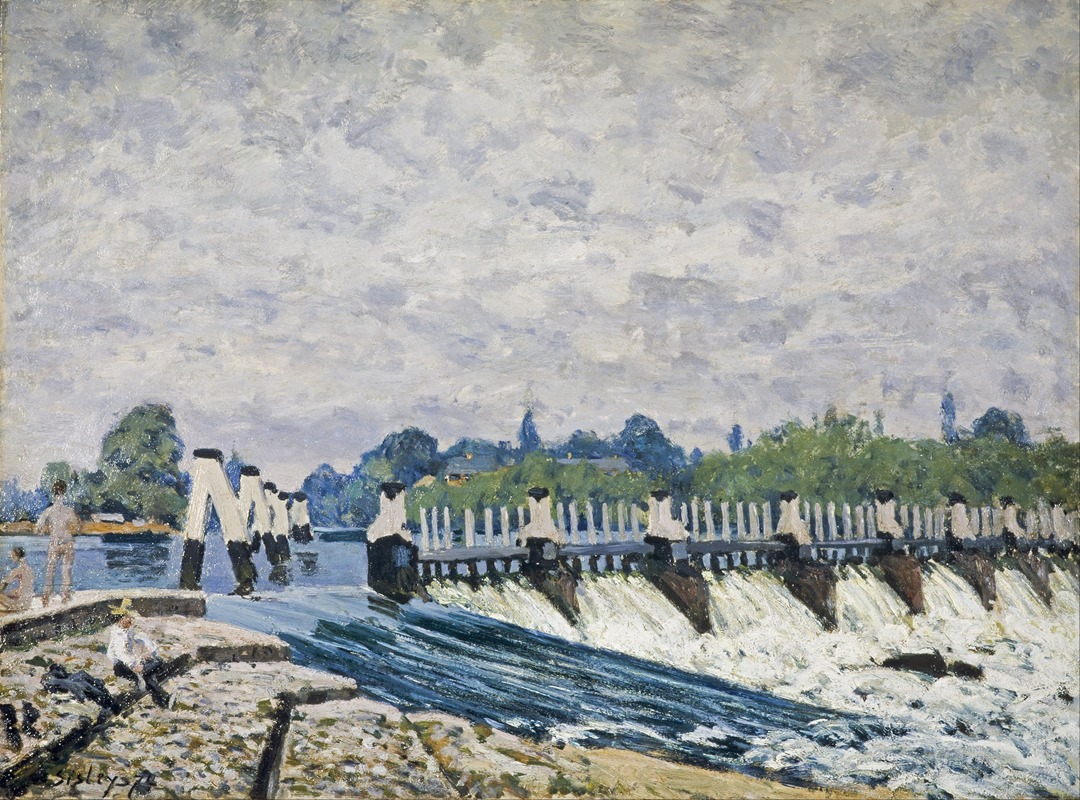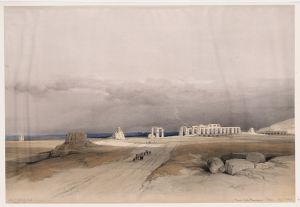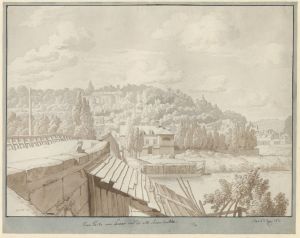
Molesey Weir, Hampton Court
A hand-painted replica of Alfred Sisley’s masterpiece Molesey Weir, Hampton Court, meticulously crafted by professional artists to capture the true essence of the original. Each piece is created with museum-quality canvas and rare mineral pigments, carefully painted by experienced artists with delicate brushstrokes and rich, layered colors to perfectly recreate the texture of the original artwork. Unlike machine-printed reproductions, this hand-painted version brings the painting to life, infused with the artist’s emotions and skill in every stroke. Whether for personal collection or home decoration, it instantly elevates the artistic atmosphere of any space.
Alfred Sisley, a prominent French Impressionist painter, created "Molesey Weir, Hampton Court" during his brief stay in England in the early 1870s. Sisley, known for his dedication to landscape painting, often depicted scenes of rivers, skies, and rural settings with a focus on light and atmosphere. This painting is one of several works he completed during his time in the Thames Valley, where he explored the English countryside and its waterways.
"Molesey Weir, Hampton Court" captures a view of the River Thames near Hampton Court, a historic area in southwest London. The weir, a structure used to control water flow, is depicted alongside the natural surroundings, including trees and reflections in the water. Sisley's characteristic loose brushwork and attention to the effects of light and weather are evident in this piece, showcasing his Impressionist style. The painting reflects his ability to convey the tranquil beauty of the landscape while emphasizing the interplay of light and color.
Sisley's visit to England was partly influenced by the Franco-Prussian War (1870–1871), which disrupted life in France. During this period, he sought refuge in England, where he found inspiration in the serene landscapes along the Thames. His works from this time, including "Molesey Weir, Hampton Court," demonstrate his fascination with the English countryside and its unique atmospheric qualities.
The painting is an example of Sisley's commitment to plein air painting, a technique central to the Impressionist movement. By working outdoors, he was able to capture the changing effects of light and weather directly from nature. This approach allowed him to create works that were both spontaneous and deeply connected to the environment he depicted.
Today, "Molesey Weir, Hampton Court" is recognized as an important example of Sisley's work during his English period. It reflects his mastery of landscape painting and his ability to translate the subtleties of nature onto canvas. The painting is held in a private collection, and its exact details, including its current location, are not widely documented. However, it remains a testament to Sisley's artistic vision and his contribution to the Impressionist movement.


















